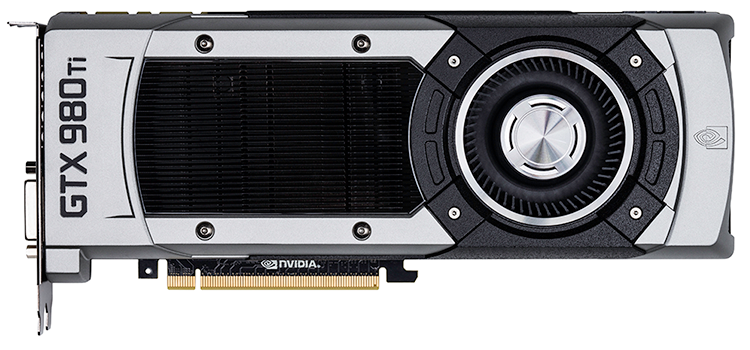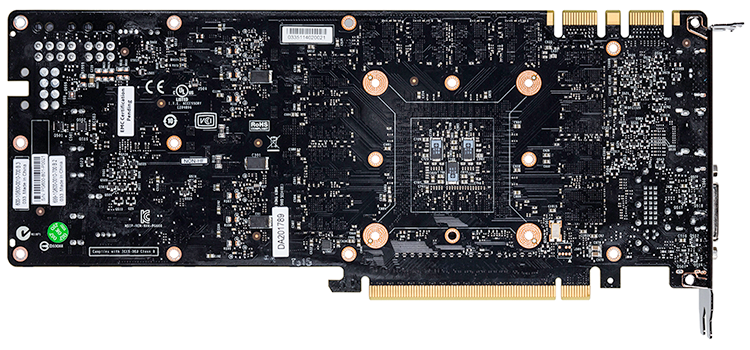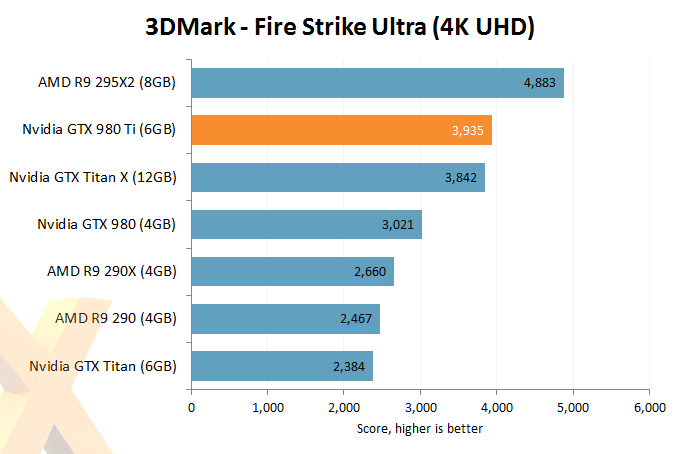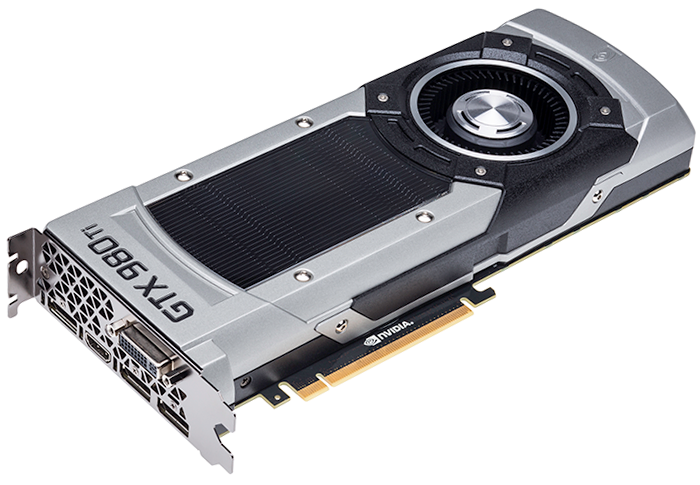Our Aim
To provide you with an overview on New And existing technologies, hopefully helping you understand the changes in the technology. Together with the overviews we hope to bring topical issues to light from a series of independent reviewers saving you the time And hassle of fact finding over the web.
We will over time provide you with quality content which you can browse and subscribe to at your leisure.
TekSpek 's

NVIDIA GeForce GTX 980Ti
Date issued:
A GeForce primed for 4K gaming
The arrival of Nvidia's hard-hitting GeForce GTX Titan X certainly whet the appetite of enthusiast gamers when it arrived with benchmark-busting performance back in March of this year.
Based on a new GM200 die, Titan X realised the full potential of the Maxwell architecture and Nvidia decided to go all out with a massive 12GB frame buffer. It was a card designed to make a statement, but such lavish engineering resulted in a street price of $999 - a hefty sum, no matter the commitment of the gamer.
Savvy shoppers, however, will have realised that a big gap existed between Titan X and GeForce GTX 980, and you didn't need a crystal ball to know that another variant would one day plug that hole. It's called GeForce GTX 980 Ti and it arrives today with plenty of promise in tow.

Outfitted with a familiar 900-series cooler, the GeForce GTX 980 Ti is designed as a more-affordable alternative to the full-fat GeForce GTX Titan X and will soon go head-to-head with the fabled AMD Radeon R9 390X.
Priced at $649 - a whopping 35 per cent less than Titan X - GeForce GTX 980 Ti retains the eight-billion-transistor GM200 die and, as is often the case, makes a cut here and a snip there in order to meet the newer price point. So what's changed, you might ask?

Well, there aren't too many major surprises and the technically-minded among you may have been able to guess the new card's specification. As detailed in the table below, Nvidia starts by cutting the number of SM units from 24 on the Titan X to 22 on the GTX 980 Ti. This downgrade sees the number of processors and texture units drop to 3,072 and 172, respectively, but clock speed and memory bus remains untouched.
It should come as no surprise to find that Nvidia has also taken a more sensible approach to memory size on this consumer-focussed card. The GDDR5 frame buffer now weighs in at 6GB (half that of Titan X), and the figure not only bodes well for price but should also prove plenty sufficient for ultra-high-resolution gaming.
GeForce GTX Titan X (12GB) |
GeForce GTX 980 Ti (6GB) |
GeForce GTX 980 (4GB) |
GeForce GTX 780 Ti (3GB) |
|
| Launch date | March 2015 |
June 2015 |
September 2014 |
Nov 2013 |
| Codename | GM200 |
GM200 |
GM204 |
GK110 |
| Process (nm) | 28 |
28 |
28 |
28 |
| Transistors (mn) | 8,000 |
8,000 |
5,200 |
7,080 |
| Approx Die Size (mm²) | 601 |
601 |
398 |
551 |
| Full implementation of die | Yes |
No |
Yes |
Yes |
| SM Units | 24 |
22 |
16 |
15 |
| Processors | 3,072 |
2,816 |
2,048 |
2,880 |
| Texture Units | 192 |
172 |
128 |
240 |
| ROP Units | 96 |
96 |
64 |
48 |
| Peak GPU Clock/Boost (MHz) | 1,076 |
1,076 |
1,216 |
928 |
| Peak GFLOPS (SP) | 6,611 |
6,060 |
4,981 |
5,345 |
| Peak GFLOPS (DP) | 207 |
189 |
156 |
223 |
| Memory Clock (MHz) | 7,012 |
7,012 |
7,012 |
7,012 |
| Memory Bus (bits) | 384 |
384 |
256 |
384 |
| Max bandwidth (GB/s) | 336 |
336 |
224 |
336 |
| Default memory size (MB) | 12,288 |
6,144 |
4,096 |
3,072 |
| Power Connectors | 8+6-pin |
8+6-pin |
6+6-pin |
8+6-pin |
| TDP (watts) | 250 |
250 |
165 |
250 |
| GFLOPS per watt | 26.44 |
24.24 |
30.19 |
21.38 |
| Launch MSRP | $999 |
$649 |
$549 |
$699 |
Board power arrangement goes unchanged, with the GTX 980 Ti requiring 8+6-pin power cables, and the card's outputs are comprised of the same five connectors: DVI, HDMI and three DisplayPort. However, custom boards with third-party coolers and factory overclocks are expected to be available soon after launch, so do be aware that power requirements and available outputs may change as per the manufacturer's unique design.
Performance and Overclocking

On paper, GeForce GTX 980 Ti is the graphics card that many gamers will have been waiting for, and benchmarks from leading publications suggest that end users won't be disappointed. Indeed, in some cases, GTX 980 Ti has been found to be as quick (if not quicker) than GTX Titan X.
How can this be? The logical assumption is that the 900-series card is able to reach higher frequencies using Nvidia's GPU Boost technology, and when gaming, core frequency can be all important.

Looking at real-world gaming performance at a lofty 4K resolution, the GTX 980 Ti once again proves to be a match for the Titan X, with both cards vying for the position of fastest single-GPU graphics card. There will, of course, be instances in which the Titan X's 12GB frame buffer pays dividends, but in most games the cheaper GTX 980 Ti is the more sensible choice.
It's also worth noting that these cards ideally need to be married to a high-resolution monitor in order for their potential to be fully realised. GTX 980 Ti is frankly overkill for 1080p gaming, yet it's a valuable asset at 4K and in Alien Isolation proves to be up to 30 per cent faster than GTX 980.

Out-the-box performance is excellent, but in the knowledge that many partner cards will be overclocked by default, it's interesting to see how much headroom is actually available. Reviews from tech media have showcased overclocked core and memory speeds of 1,200MHz and 7,800MHz, respectively, suggesting that the default specification is merely a starting point in the search for chart-topping benchmark scores.
Summary
The Titan X remains Nvidia's finest GPU to date, but for the savvy consumer, GTX 980 Ti is without a doubt one of the best high-end cards available today. Offering almost all the goodness of the fully-armed Titan X, GTX 980 Ti scales back just a touch and reduces price by up to 35 per cent, making it a $649 powerhouse that's ideally suited to the rigours of 4K gaming.

A wide range of GeForce GTX 980 Ti graphics cards are available to purchase at Scan. View the full range of GeForce GTX 980Ti Cards